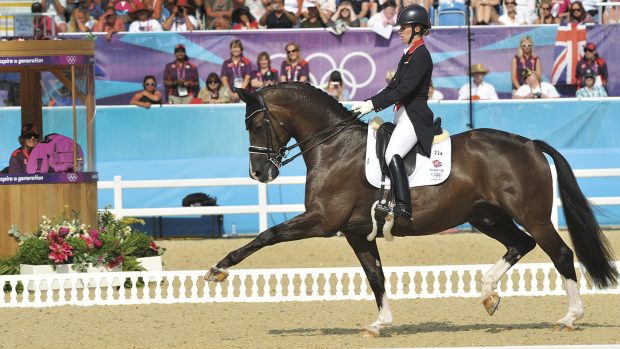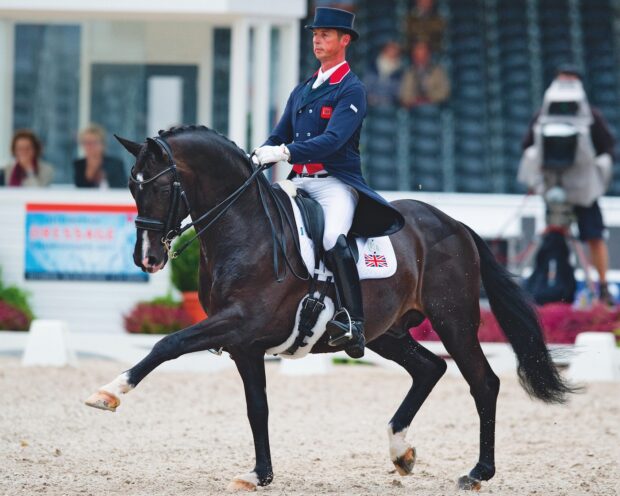Shiny, fit and well – Toledo De Kerser certainly didn’t look his 18 years in Carl Hester’s dressage masterclass at Defender Burghley Horse Trials.
“He still looks five years old, and so does his rider!” said Carl of the Olympic and world gold medallist and his equally decorated rider, Tom McEwen.
Although the crowd emitted a collective grumble after Carl confirmed the upcoming European Eventing Championships squad member is “going home after the demo”, the dressage maestro and his five-star pupil had the stands erupting with laughter throughout the Friday lunchtime session.
Carl said he’d been told the eventer-turned-family pet Toledo had been fresh to get on. “Tom offered me the ride, but I was busy!” he told the audience.
Toledo De Kerser in Burghley masterclass: three key takeaways
Fresh from the European Dressage Championships, Carl Hester treated spectators to his medal-winning training insights. He and Tom examined and revisited some of the movements from the Burghley dressage test.
1. First impressions count
A dressage test entrance and centre line constitute the judges’ first impression – and the rider’s first chance to wow.
“Common mistakes you see are quarters in, crookedness, and coming into the halt transition too fast,” said Carl. “We have a rein aid, leg aid and seat aid, so we have to use all three.”
Tom initially had some trouble demonstrating a “bad” downward transition, as Toledo was stepping well into a soft, square halt. But by using more hand than leg the second time, he showed what not to do. “The horse actually stepped back into the halt there – but it must always be a forward transition,” said Carl.
According to Carl, more than 90% of riders surveyed at the dressage Europeans enter the arena on the left rein. “It’s much easier to straighten horses out from left to right,” he said.
2. Shoulder-in can quickly become quarters-out
A common error Carl sees is a horse’s neck bending too much to the inside. “A horse needs to be straight in a shoulder-in, meaning the head is in front of the chest,” he explained. “You can’t ride shoulder-in off the rein; it must come from the leg.”
According to Carl if you look at a horse performing shoulder-in head-on, you shouldn’t be able to see the inside hind leg. “This is the leg that’s pushing the fore on an inside track,” he said. “The classic mistake is the rider’s inside leg pushing the hind end out of alignment. So the front legs are on the centre line, but the hind legs are on an outside track. That way, a shoulder-in can quickly become quarters-out.”
3. Transitions are made up of three parts
“Transitions must have a beginning, a middle and an end,” said Carl of Tom and Toledo’s extended canter. “It’s not just about how they extend; it’s how they come back, free from resistance.
Tom gave Toledo a break, coming back to walk with a transition that Carl gave a score of five.
“Dressage riders have to be obsessed with transitions,” he said. “On every single downward transition you should collect, bring the horse back on to his hind leg, and then give a long rein.”
To stay up-to-date with all the breaking news throughout Burghley and other major shows this year, subscribe to the Horse & Hound website, from £1 a week. Horse & Hound’s 20-page magazine report on Burghley is published in 11 September issue, including full analysis and exclusive comment from six-time Burghley winner William Fox-Pitt.
You might also be interested in:
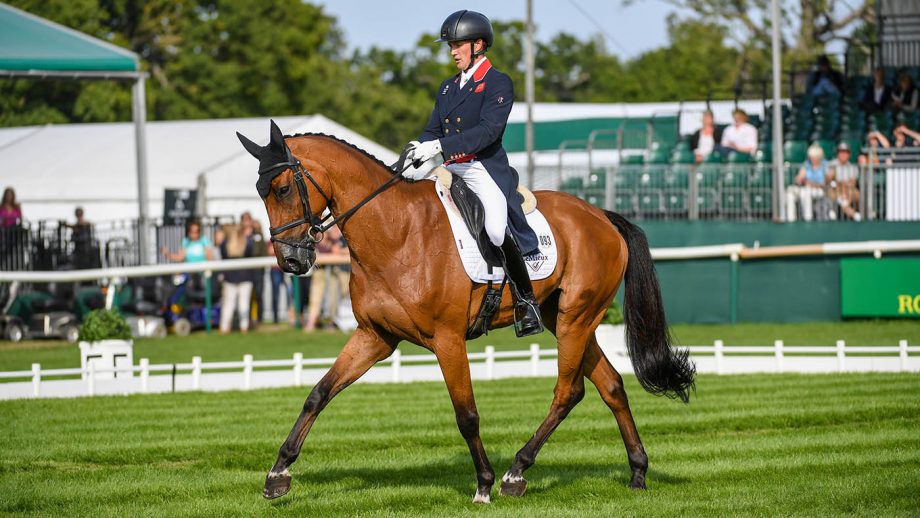
Tom McEwen’s Olympic partner Toledo De Kerser to return to Burghley’s main arena

Two Olympic gold medal winners relax together as plans for Toledo De Kerser’s future revealed

Tom McEwen shares an update on Toledo De Kerser following Burghley injury
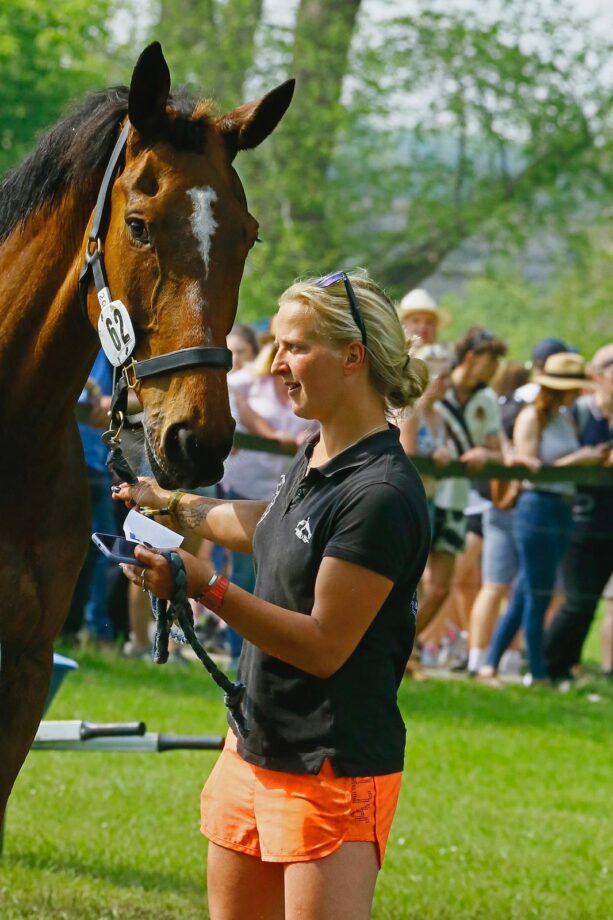
Rolling, grazing and midday naps: how the king of chill Valmy Biats spends his week at Burghley, according to his groom
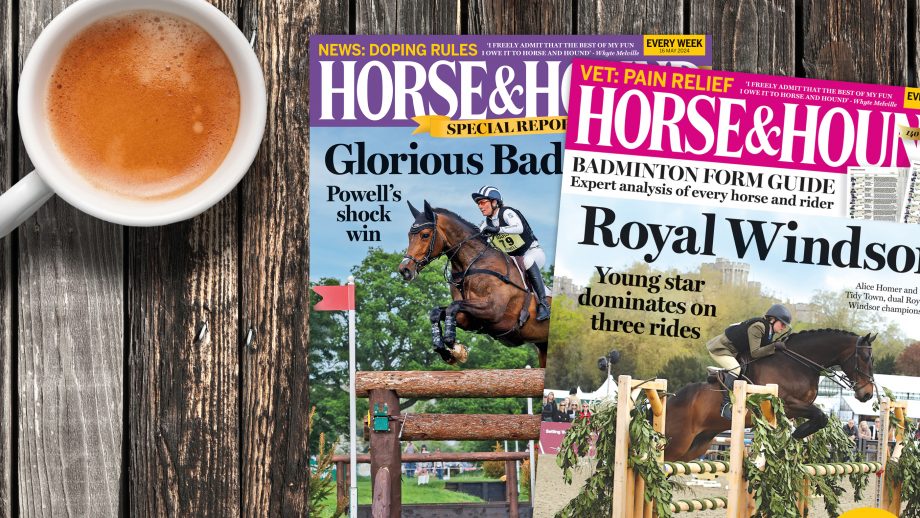
Subscribe to Horse & Hound magazine today – and enjoy unlimited website access all year round



